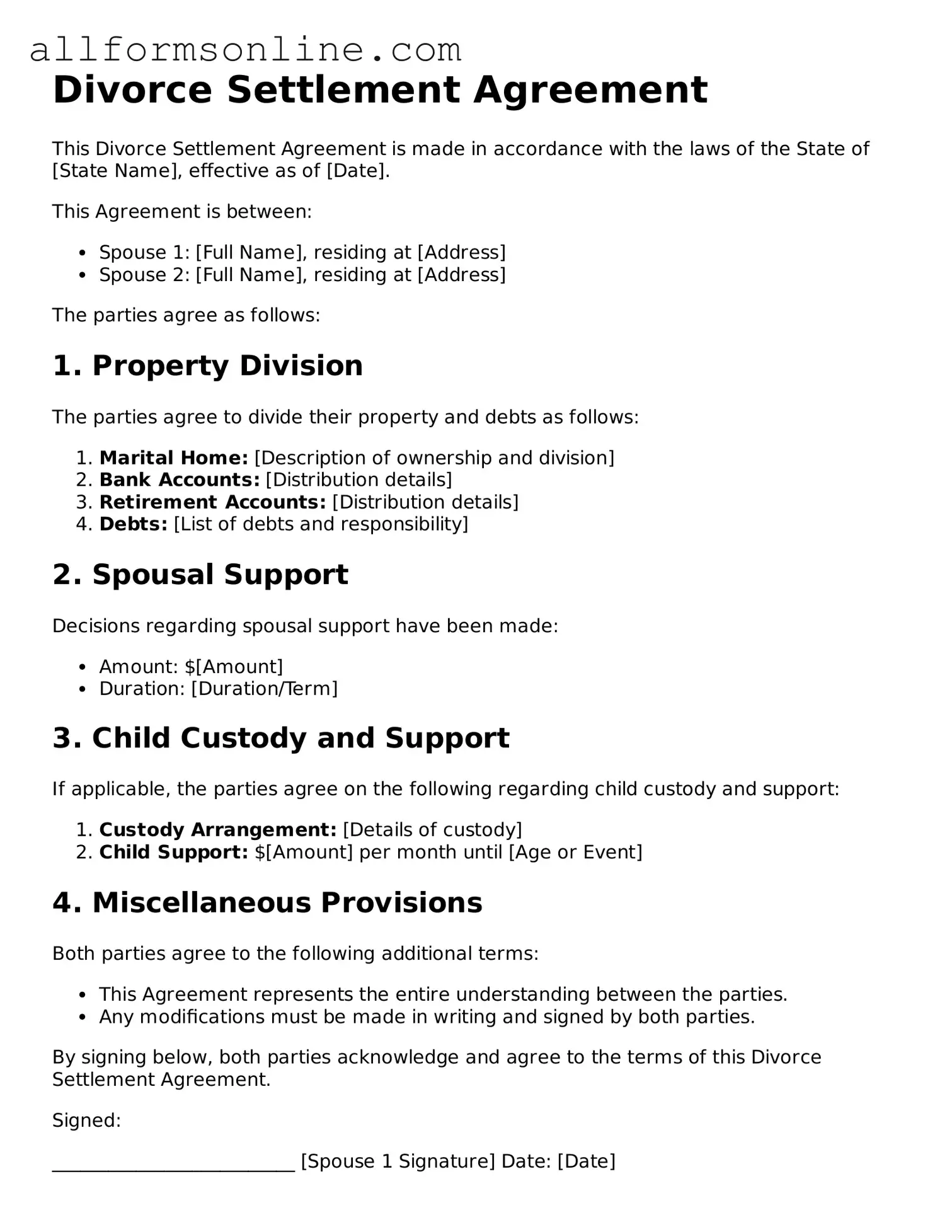What is a Divorce Settlement Agreement?
A Divorce Settlement Agreement is a legally binding document that outlines the terms and conditions agreed upon by both parties in a divorce. It typically addresses issues such as property division, child custody, child support, spousal support, and any other relevant matters. This agreement serves to ensure that both individuals have a clear understanding of their rights and responsibilities post-divorce.
Why is a Divorce Settlement Agreement important?
This agreement is crucial because it provides a framework for resolving disputes amicably. By clearly defining the expectations and obligations of each party, it can help prevent future conflicts. Additionally, having a formalized agreement can expedite the divorce process, making it smoother and less stressful for everyone involved.
How do I create a Divorce Settlement Agreement?
Creating a Divorce Settlement Agreement typically involves negotiation between both parties. It is advisable to consult with a lawyer to ensure that all legal requirements are met and that your rights are protected. You may start by discussing your priorities and preferences, then draft an agreement that reflects these discussions. Once both parties are satisfied, the document can be signed and submitted to the court.
Can I modify a Divorce Settlement Agreement after it is signed?
Yes, it is possible to modify a Divorce Settlement Agreement after it has been signed, but this usually requires mutual consent from both parties. If circumstances change significantly, such as a job loss or a change in custody needs, a modification may be necessary. It is essential to document any changes formally and, if needed, seek court approval to ensure the modifications are enforceable.
What happens if one party does not comply with the Divorce Settlement Agreement?
If one party fails to comply with the terms of the agreement, the other party has the right to seek enforcement through the court. This may involve filing a motion for contempt, which could lead to legal penalties for the non-compliant party. Courts take these agreements seriously, as they are designed to protect the rights of both individuals involved.
Is a Divorce Settlement Agreement the same as a divorce decree?
No, a Divorce Settlement Agreement is not the same as a divorce decree. The agreement is a document created by both parties outlining their terms of divorce, while the divorce decree is a court order that finalizes the divorce. The court will review the settlement agreement and, if it meets legal standards and is fair, incorporate it into the divorce decree.
Do I need a lawyer to draft a Divorce Settlement Agreement?
While it is not mandatory to have a lawyer draft your Divorce Settlement Agreement, it is highly recommended. A lawyer can help ensure that the agreement complies with state laws and adequately protects your interests. They can also provide guidance on negotiation strategies and potential pitfalls, making the process less daunting.
What if my spouse and I cannot agree on the terms of the Divorce Settlement Agreement?
If you and your spouse cannot reach an agreement, mediation may be a helpful option. A neutral third party can assist both individuals in discussing their differences and finding common ground. If mediation fails, the matter may need to be resolved in court, where a judge will make decisions regarding the contested issues.
